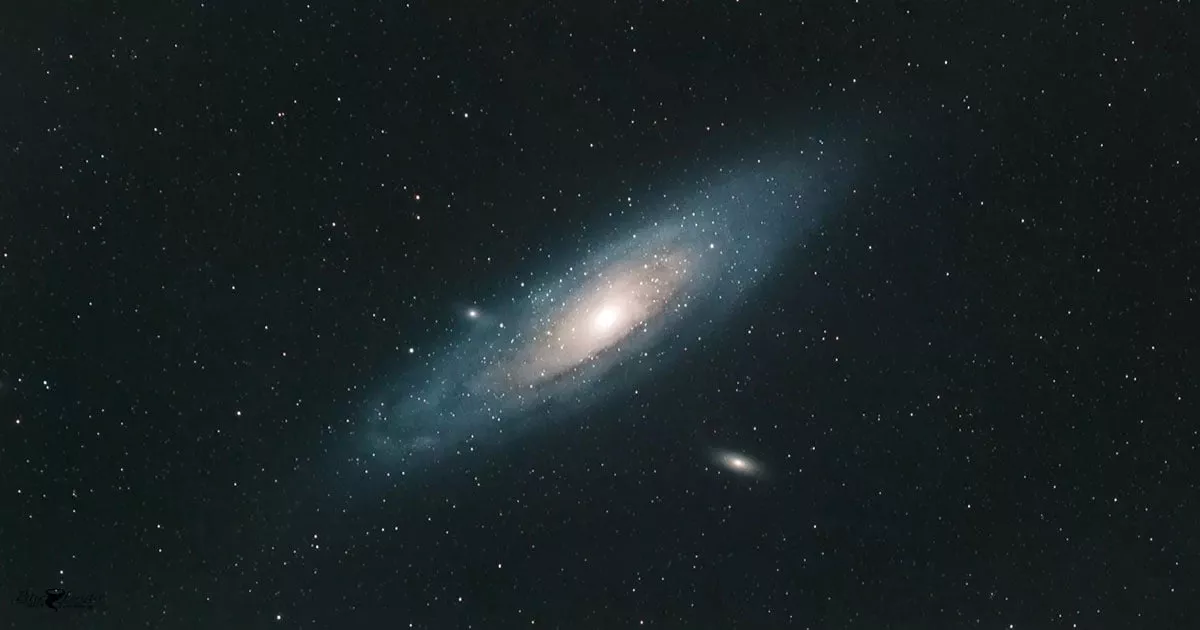

For years, astronomers said the Milky Way and Andromeda were locked in a slow-motion cosmic death spiral, set to smash together in about five billion years and form a monstrous new galaxy, cheekily called “Milkdromeda.” But, surprise! Recent simulations show that this “inevitable” galactic pile-up is now a toss-up at best. The odds? About 50/50. Turns out, our local universe is messier (and more interesting) than we thought.
The old story was simple: Two giant spirals barreling toward each other, nothing to stop them. But new research factored in the gravitational muscle of the Large Magellanic Cloud, a smaller galaxy that’s tugging on the Milky Way like a cosmic backseat driver. This little troublemaker could pull us just enough off course to dodge Andromeda entirely. In short: what used to be a guaranteed wreck is now more like a coin flip.
Don’t panic. Andromeda is still hurtling toward us at a brisk 70 miles per second, but space is huge. Even at that speed, we’re looking at a possible “close call” or merger somewhere between 5 and 10 billion years from now (give or take a few billion). And if you’re worried about Earth? Worry about the Sun turning into a red giant first; that is happening on basically the same timescale and will cook us long before any galaxies get cozy.
If the two galaxies go full demolition derby, don’t expect a fireworks show of crashing stars; there’s just too much empty space. Most stars, including our Sun, will simply pass by each other. The real chaos is gravitational: solar systems could get flung into weird orbits, stars get shuffled, and the whole thing could trigger a fresh wave of star formation. At the center, the giant black holes will eventually merge into something even more ridiculous.
If the Milky Way swerves, both galaxies might keep their spiral shapes and avoid turning into an enormous, bland elliptical galaxy. Milkdromeda might just stay an astronomer meme rather than a reality.
Want to spot our supposed future nemesis? Andromeda is visible to the naked eye from dark skies as a fuzzy smudge. Best time is autumn for the Northern Hemisphere. Use an app like Sky Map (Android) or SkyView (Apple) to help. It’s the most distant object you’ll ever see with unaided eyes; no telescope needed.
Beyond cosmic drama, these events show how galaxies grow and evolve. Most big galaxies have probably been through a few of these mergers. By studying Andromeda and its red giants (JWST can even pick out individual stars!), astronomers can piece together the history of star formation and, by extension, the story of the universe itself. Plus, studying the chemical fingerprints in their light tells us how elements are forged and scattered. That's real “star stuff” Carl Sagan territory.
A mashup galaxy that might form when (or if) the Milky Way and Andromeda merge. It was a done deal, but now… maybe not.
Anywhere from 5 to 10 billion years from now, maybe never, depending on who you believe this decade.
A bit. It’s wider and maybe more massive, but new data keeps tweaking those numbers.
If humanity is still around in 5 billion years, we’ll have bigger problems, like the Sun boiling away the oceans.
Mostly a lot of gravitational shuffling and new star formation. Stars themselves almost never hit each other.